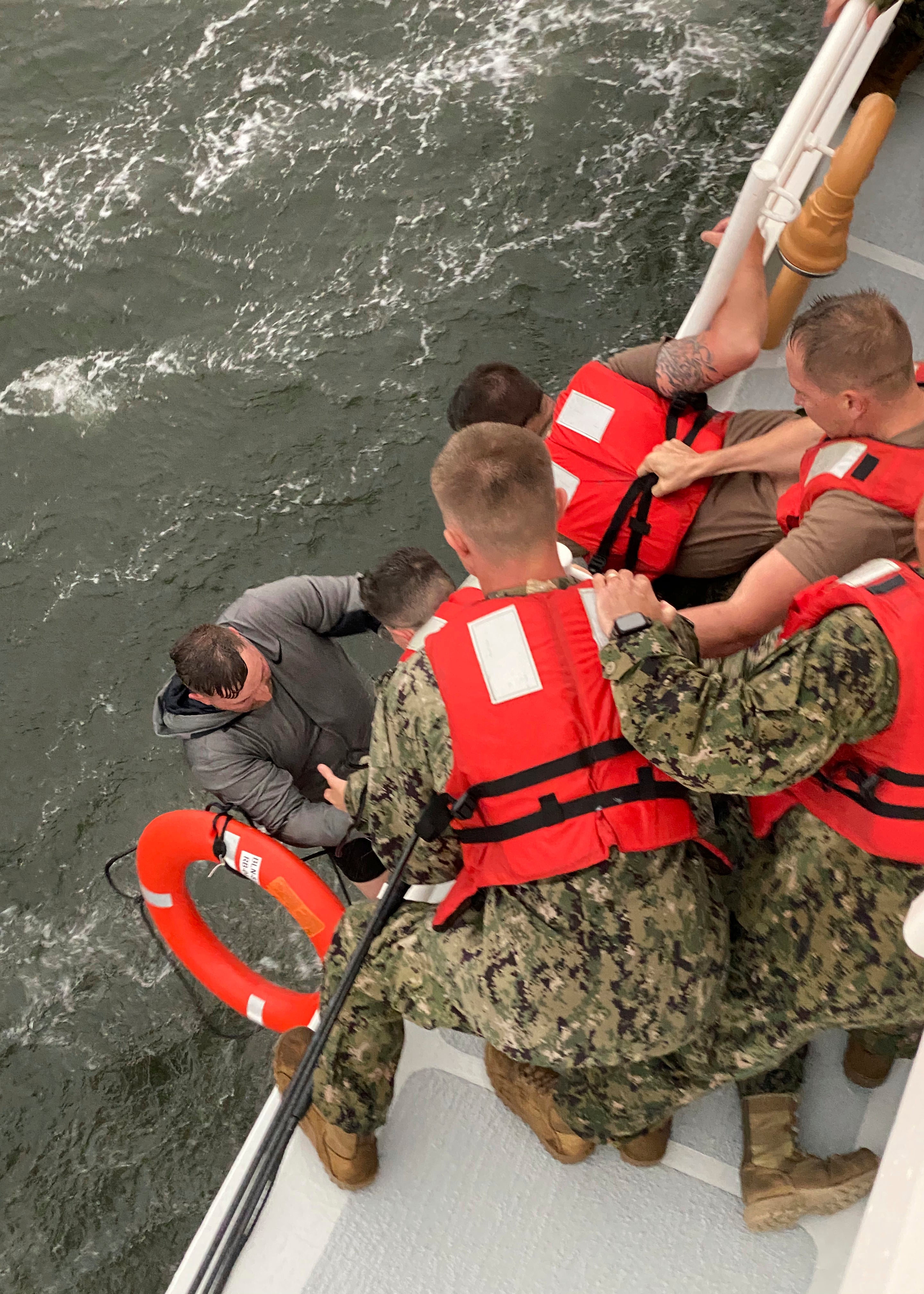Divers aim to reach capsized ship in search for survivors
It’s become a race against time in the search for 12 missing people from an oil industry platform ship that capsized in the Gulf of Mexico

Racing against time in the search for 12 people missing since their ship capsized in the Gulf of Mexico, Coast Guard divers hoped a break in stormy weather Thursday would give them an opportunity to reach the overturned platform vessel.
The Seacor Power flipped over in hurricane-force winds and high seas on Tuesday, miles south of the Louisiana coast. Six people were rescued alive and one person's body was recovered from the water as searchers scanned an area larger than the state of Rhode Island
“Today, weather permitting, we anticipate divers making it to the vessel," U.S. Coast Guard Petty Officer Third Class John Michelli said early Thursday.
Asked shortly after dawn whether divers would then be able to get inside it, Petty Officer Jonathan Lally said “we don’t know just yet. That’s one of those things we’re trying to work through now.”
Part of the overturned ship's hull and one of its legs have remained above water. The bulky vessel, also called a jackup rig, has three long legs designed to reach the sea floor and lift it out of water as an offshore platform.
Authorities also plan to use all-terrain vehicles Thursday to search the shoreline near Port Fourchon, a major base for the U.S. oil and gas industry.
Despite a widening search involving Coast Guard boats and aircraft, no other crew members have been spotted. Interrupted by darkness and bad weather, the effort spread to more than 1,440 square miles (3,730 square kilometers) by Wednesday afternoon, according to a news release.
“We had both air and surface assets out last night — nothing materially has changed," Michelli said around dawn Thursday.
The boat, capable of working in up to 195 feet (nearly 60 meters) of water, can carry a crew of 12, two “special personnel” and 36 passengers, according to the company website.
Coast Guard Capt. Will Watson said earlier that winds were 80 to 90 mph (130 to 145 kph) and waves rose 7 to 9 feet high (2.1 to 2.7 meters) when the lift boat overturned.
“That’s challenging under any circumstance,” Watson said. “We don’t know the degree to which that contributed to what happened, but we do know those are challenging conditions to be out in the maritime environment.”
Marion Cuyler, the fiancée of crane operator Chaz Morales, was waiting with family of other missing workers at a Port Fourchon fire station near a landing site where helicopters were coming and going. She said she talked to her fiancé before he left Tuesday.
“He said that they were jacking down and they were about to head out, and I’m like, ‘The weather’s too bad. You need to come home.’ And he’s like, ‘I wish I could.’”
Watson said the vessel left Port Fourchon at 1:30 p.m. Tuesday, bound for Main Pass off the southeast Louisiana coast.
“We did have some weather reports yesterday that there would be some challenging weather. But this level of weather was not necessarily anticipated,” he said.
The National Weather Service in New Orleans issued a special marine warning before 4 p.m. Tuesday that predicted steep waves and winds greater than 50 knots (58 mph).
The Coast Guard received a distress message from a good Samaritan at 4:30 p.m. and issued an urgent marine broadcast that prompted multiple private vessels in the area to respond, saving four people, the agency said. Coast Guard crews rescued another two people.
National Weather Service meteorologist Phil Grigsby said the system was an offshore derecho — or straight-winds storm. “This was not a microburst -- just a broad straight-line wind event that swept over a huge area,” Grigsby said.
He said the weather service’s nearest official gauge, at Grand Isle, showed about 30 minutes of 75 mph (120 km/h) winds, followed by hours of winds over 50 mph (80 km/h).
The initial storm system was followed by a low-pressure system called a wake low, which amplified the winds and made them last longer, Grigsby said.
“It was the strongest wake low I’ve seen in almost 18 years here,” he said.
Shrimp boat captain Aaron Callais said the bad weather started with small, quickly dissipating waterspouts that buffeted his father’s boat, the Ramblin’ Cajun.
“There was nothing we could do. One minute we were facing north, the next south, then east and west,” he said. “Things were flying in the cabin.’
Callais posted video on Facebook of wind battering the boat as he talked on the boat’s satellite phone to friends and family, including his dad, “letting him know the situation, that it wasn’t looking good. We didn’t know if we were going to make it out.”
Bookmark popover
Removed from bookmarks